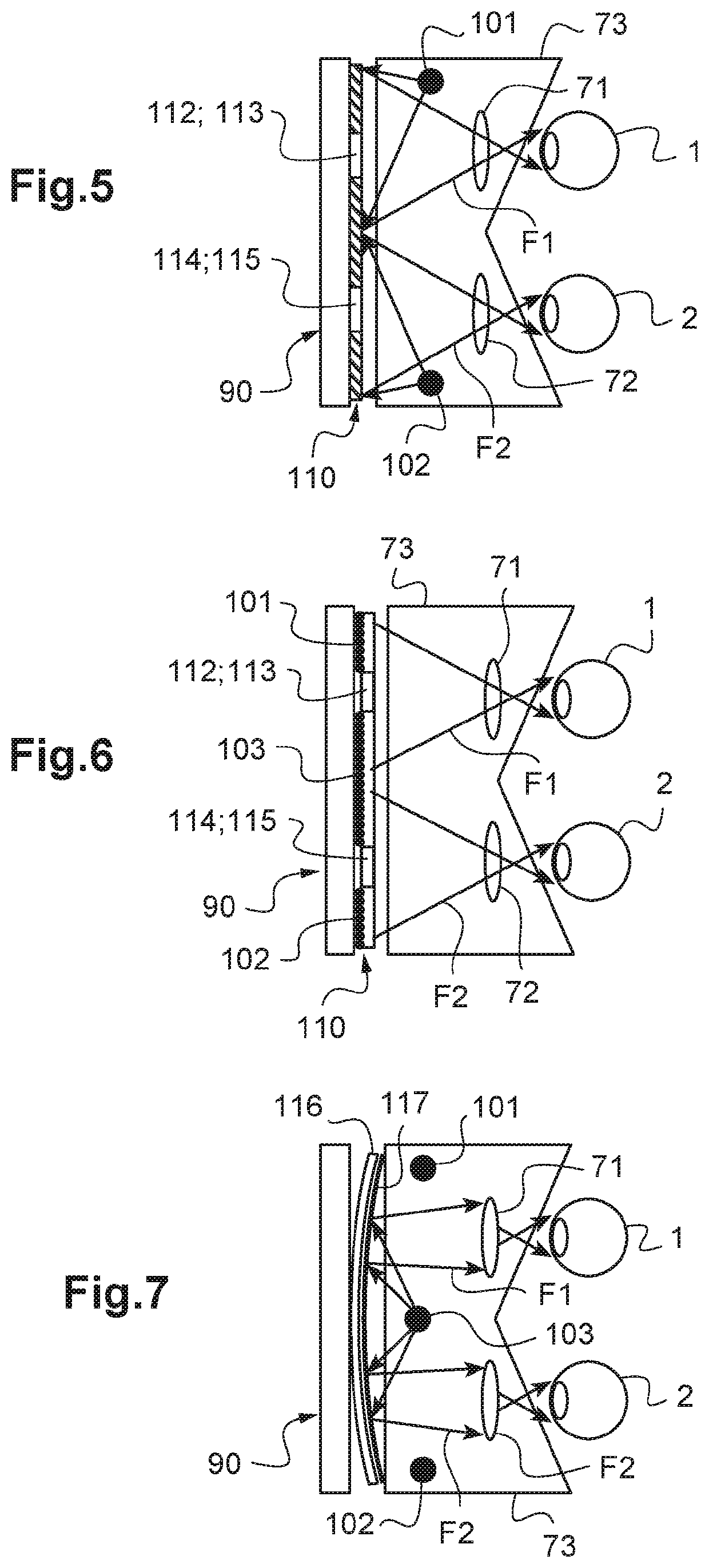Method for Determining a Light Filter Applied to a Spectacle Lens, Associated Display Device and Virtual Reality Helmet
a technology of spectacle lens and light filter, applied in the field of ophthalmic optics, can solve the problems of inconvenient implementation, inconvenient use, and inability to meet the needs of eye care professionals, and achieve the effects of reducing the number of glasses
- Summary
- Abstract
- Description
- Claims
- Application Information
AI Technical Summary
Benefits of technology
Problems solved by technology
Method used
Image
Examples
example 1
[0273]It is sought to determine a light filter for an individual who has a visual acuity:[0274]of 9 / 10 when he is equipped with his visual correction equipment (corrective spectacles); and[0275]of 6 / 10 under glare conditions, for example under strong sunlight.
[0276]It is possible by virtue of the method to test a predetermined series of trial filters on the individual, for example by adding these filters to each of the lenses of his spectacles. The various trial filters have different values of visual transmission Tv and different spectral responses (attenuation as a function of wavelength for example).
[0277]By virtue of the displaying device, in step c), a luminous condition beyond the sensitivity threshold of the individual (value measured beforehand) is simulated.
[0278]Then, for each trial filter, the visual acuity of the individual is measured. The one or more trial filters that allow a visual acuity of at least 9 / 10 to be restored in a luminous environment are selected.
example 2
[0279]An individual having a visual pathology is very sensitive to light and his visual performance is very sensitive to the effect of a light filter. The individual may require a light filter even under low-brightness conditions (indoors situation for example) because the light filter then allows other visual functions to be ameliorated and comfort to be improved.
[0280]In this particular case, in step b1), trial filters are selected depending on their spectral response in the visible domain (380-780 nm).
[0281]Depending on the specific needs of the individual (which depend on his pathology and on his specific sensitivity), trial filters of different spectral responses will be selected and evaluated according to the following predefined criteria:
[0282]A) improvement in clearness;
[0283]B) increase in brightness;
[0284]C) alteration of colors;
[0285]D) protection against light.
[0286]The following table collates results obtained by virtue of the determining method of the invention.
[0287]T...
PUM
 Login to View More
Login to View More Abstract
Description
Claims
Application Information
 Login to View More
Login to View More - R&D
- Intellectual Property
- Life Sciences
- Materials
- Tech Scout
- Unparalleled Data Quality
- Higher Quality Content
- 60% Fewer Hallucinations
Browse by: Latest US Patents, China's latest patents, Technical Efficacy Thesaurus, Application Domain, Technology Topic, Popular Technical Reports.
© 2025 PatSnap. All rights reserved.Legal|Privacy policy|Modern Slavery Act Transparency Statement|Sitemap|About US| Contact US: help@patsnap.com


